The top 15 industrial heritage sites along EuroVelo 15 – Rhine Cycle Route
Switzerland
The first stretch of EuroVelo 15 takes you across Switzerland from Lake Toma to Lake Constance, passing by the 1,830 meter high mountain Gonzen in the canton of St. Gallen. This mountain hosts an abandoned iron mine, the Bergwerk Gonzen, where you can refuel at their on-site restaurant after visiting the museum. On fixed dates that can be checked on their website, there’s also guided tours for individuals and groups.
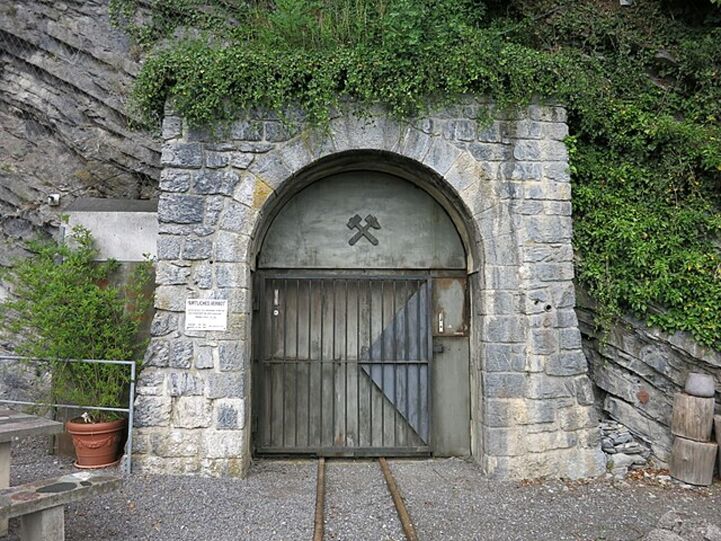
After cycling on to the city of Basel, you’re presented with two choices of how to continue your industrial journey: the first option is the Basler Papiermühle, ranked first out of 147 of activities in Basel by Tripadvisor. This paper mill turned museum is regarded as a heritage site of national significance and the exhibition is primarily dedicated to the history and techniques of papermaking, as well as the art of book printing and writing in general.
Your second option is Basel's port museum, which offers a wide range of events and guided tours that provide insights into the history and importance of the port of Basel and shipping on the Rhine. Here, you can enjoy ship models, films and interactive installations as well as a historical model of the port of Basel.
France
After leaving Switzerland, you have the option to continue cycling on either the western bank of the Rhine, in France, or the eastern bank, located in Germany (of course you can also switch sides at any bridge). Train and mining enthusiasts are encouraged to stay on the French side and even venture just a little bit further into Alsace.
Cité du Train is the largest railway museum on our continent and preserves one of the most important railway heritages in Europe. Three exhibition and activity areas retrace the history of rail transport from the 19th century to the present day, from the first steam locomotives to the TGV. The museum’s collection includes not only an impressive amount of old locomotives and motors, but also highlights fields such as science and technology, social history, and even art.
The late 1940s are sometimes referred to as the golden age of potash mining in Alsace. Potash was harvested in the region from the early 1900s until the early 2000s and mainly used to make fertilizer. At Carreau Rodolphe in Pulversheim, one of the rare mining complexes that have been preserved, you have the chance to see the oldest extraction machine that is still in working order. This historically relevant site, which today hosts an Eco museum, is also where the most devastating disaster in the history of potash mining in Alsace took place, claiming 25 lives on 23 July 1940.
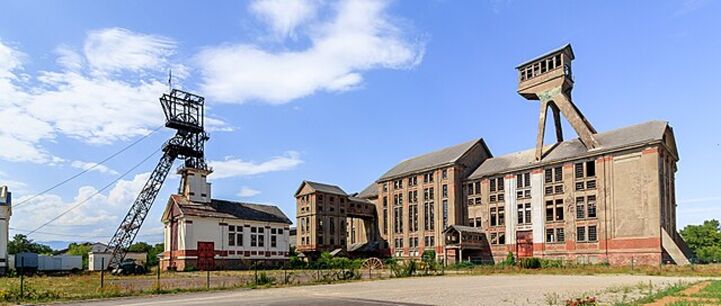
Both destinations are about 25 kilometres west of the EuroVelo 15 track, but Carreau Rodolphe is only about a one hour bike ride north of Cité du Train, which means that you could easily visit both sites with a single detour. An added benefit: the Cité du Train is located in Mulhouse, an old industrial city with a rich past, so you could spend a night there and explore it further.
Germany
When crossing back into Germany’s south-western state of Baden-Württemberg after leaving the picturesque Alsace behind, you can stop right along the Rhine in Mannheim to visit the so-called Technoseum, which showcases the region’s history of industrialisation from the 18th century to today. Baden-Württemberg is renowned for its many inventors and inventions, so you’re sure to make some interesting discoveries at Technoseum. The state is in fact even the birthplace of Carl Drais, inventor of the dandy horse and commonly referred to as the “father of the bicycle”. For those interested, there is the opportunity to add a pit stop some 60 kilometres south of Mannheim in Karlsruhe, Carl Drais’ hometown. At the city's transport museum, you have the chance to get a close look at an original dandy horse, which will most likely give you a newfound appreciation for the modern day bicycle you’re using to ride EuroVelo 15. Important notice: the museum is only open on Sundays from 10:00 to 13:00.
The next industrial heritage site on your agenda could be the historic Rhine ship mill in Ginsheim, in the state of Hesse. Ship mills have operated on this part of the Rhine for centuries before they had to make way for growing shipping traffic. The museum is an authentic reconstruction of the last productive Rhine ship mill, which was unfortunately destroyed during World War II, and offers intriguing insights into the technology and working conditions of the past.
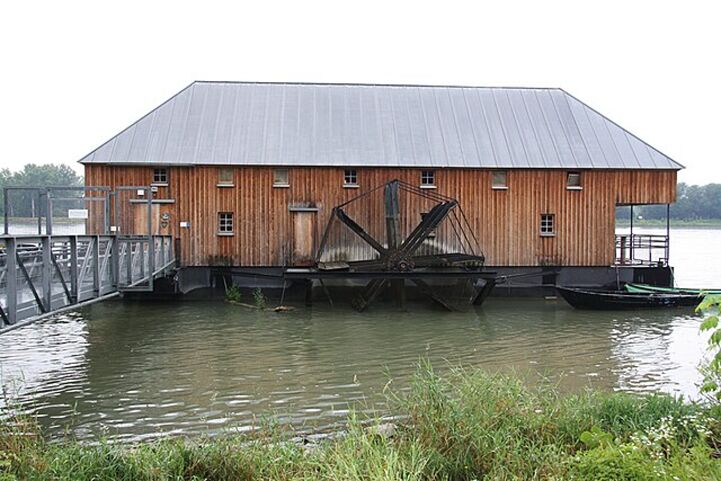
The city of Koblenz in Rhineland-Palatinate again offers you two equally interesting museums.
For train aficionados, there is the Deutsche Bahn (DB) museum, open on Saturdays from 10:00 to 16:00. Here, you can “discover the whole world of railways”, as the museum advertises itself. They showcase a historic vehicle collection comprising around 50 locomotives and 50 passenger and goods wagons. The special attraction: four saloon cars from contemporary history. These were used by the German government to transport prominent personalities until the 1990s. You can immerse yourself in the world of Helmut Schmidt, go on tour with the Beatles or feel like Queen Elisabeth II on a state visit to Germany.
Your second option is the Rhine museum Koblenz. This is where you can learn everything your heart desires about navigation and waterway technology. They have models of all Rhine ships, a 30-tonne steam engine and hydrological exhibits including numerous historical measuring instruments for measuring currents and determining water quality. Even people who don’t care too much about industrial heritage will get their money's worth: Rhine museum Koblenz also offers exhibitions about early civilisations along the Rhine, fishery, castles, and many more topics.
No matter which option you choose – for those who don’t have time to do both – Koblenz with its unique location at the crossing of the rivers Rhine and Moselle, is worth stopping in for a break from cycling.
North Rhine-Westphalia is the next state along EuroVelo 15 and their industrial history surpasses that of any other federal state in Germany, so fans of industrial heritage sites, watch out!
One of the absolute highlights, the UNESCO World Heritage Site Zollverein in Essen requires you to pedal some extra 25 kilometres away from EuroVelo 15 – but it’s completely worth it! Once the largest coal mine in the world, Zollverein has been transformed into a leading destination for art, culture and creativity, drawing over two million visitors a year. There’s also a Heritage Trail taking you back to the time when the Zollverein plants were still active, and two on-site museums where you can learn more about the region’s history and its present day (Ruhr Museum) or enjoy the world's largest exhibition of contemporary design (Red Dot Design Museum).
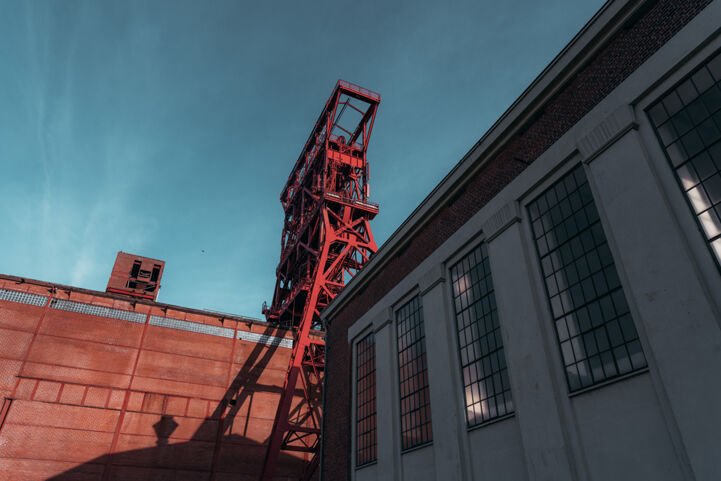
If you would rather not leave EuroVelo 15 behind for an excursion, worry not, there’s still enough industrial heritage for you to discover in “NRW”. The track leads you along the Port of Duisburg, the world’s biggest inland port, which in itself is a unique experience. After enjoying a harbour tour by boat and the vast culinary options offered around the port, you can dive deeper into the history of inland shipping by visiting the nearby German Inland Shipping Museum. The museum is open Tuesday through Sunday from 10:00 to 17:00 – and on Thursdays it’s “pay what you want”.
The Netherlands
After the impressive industrial heritage of North Rhine-Westphalia, you might be thinking that the Netherlands cannot keep up – but you would be wrong about that.
You can actually already find the first Dutch industrial heritage site on our list about 25 kilometres after crossing the border, with a slight detour from the cycle route. To be entirely fair, Nederlands Openluchtmuseum, the Netherlands Open Air Museum in Arnhem, is not just an industrial heritage site – but that just makes it even more appealing to a broader audience. The museum, which by the way won the European Museum of the Year Award in 2005, is made up of a unique collection of historical buildings from all over the Netherlands. All these houses have different purposes, with many of them representing old farms and factories, giving you the opportunity to experience an almost real-life depiction of Dutch industrial history.
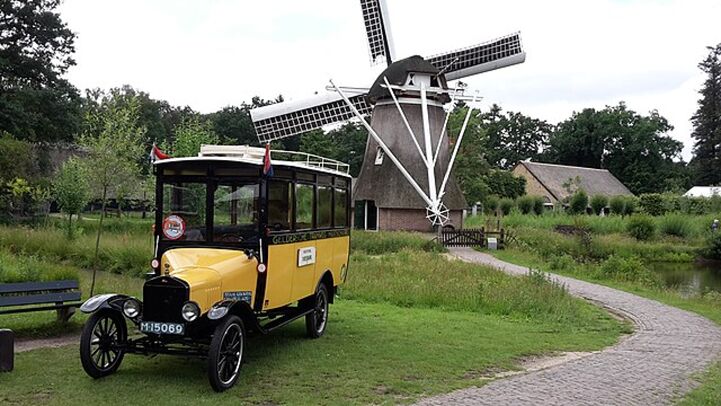
Once you have cycled further into the Netherlands, if you’re still sticking to EuroVelo 15, you will eventually pass by the Port of Rotterdam, the industrial heart of the country. Rotterdam’s seaport is not only the biggest in Europe, but the biggest worldwide outside of Asia. Since the port is directly on the EuroVelo 15 track, visiting it does not require a detour – yet if you’re still up for some additional cycling, you can visit this website to find more information on routes past all the famous and lesser-known highlights of the port catered specifically to cyclists (and pedestrians).
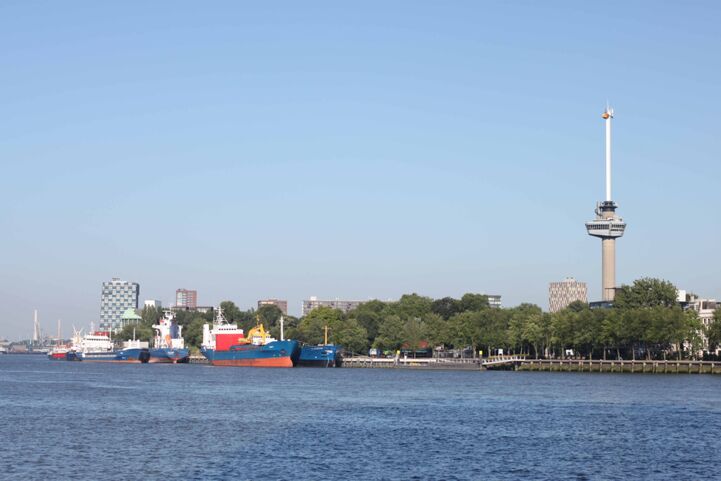
Whether you plan on cycling the whole of EuroVelo 15 – Rhine Cycle Route from Switzerland to the Netherlands or from the Netherlands to Switzerland, or just some parts of the track – you’re now ready to plan your journey so that it includes all your new favourite industrial heritage sites. Have fun exploring them!
Written by Jana Koch
Cover image: Museum der Deutschen Binnenschifffahrt © Johannes Höhn, Tourismus NRW e.V.